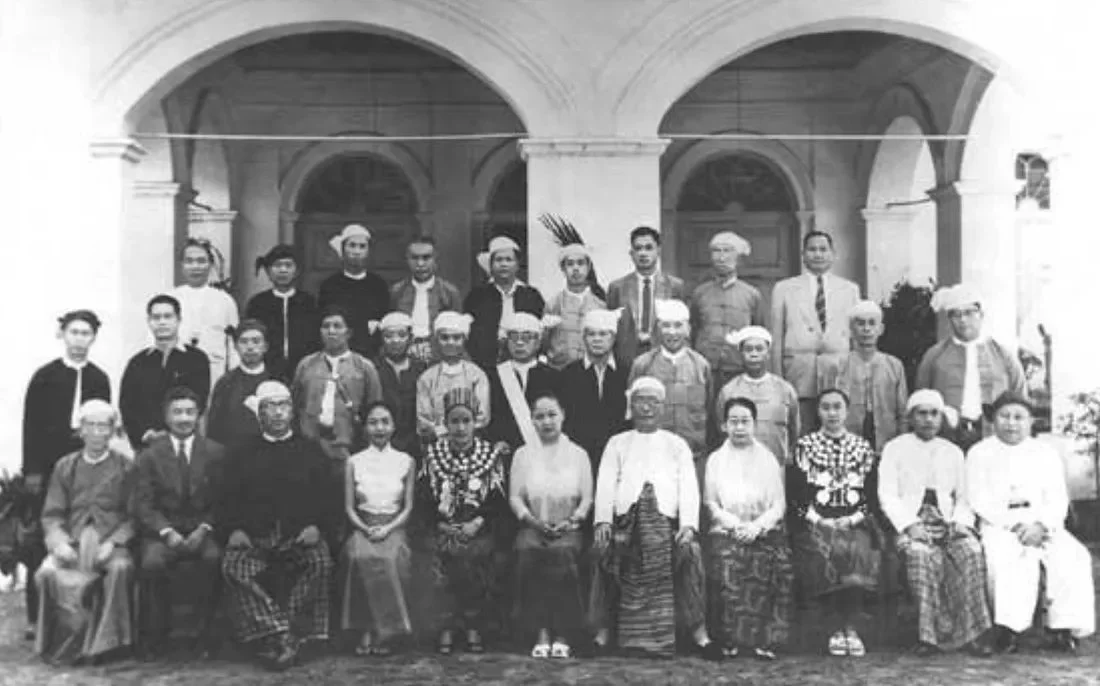Union Day | Commemorating the Signing of Panglong Agreement on February 12, 1947
Union Day in Myanmar commemorates the February 12, 1947 signing of a historic agreement that enabled the birth of a unified Republic of Burma.
In 1886, Myanmar (then called Burma) came under British control, but the British made a distinction between how central Burma and the various outlying ethnic groups were ruled. The British continued to govern Burma into the 20th century.
In the 1930s, Aung San (father of imprisoned State Counsellor and Nobel Laureate Aung San Suu Kyi) led student protests, causing the British government to imprison him.
Attendees of the Panglong Conference in February 1947
He fled to Japan in 1940, returning in 1941 with the invading Japanese as head of the Burma Independence Army (BIA). General Aung San later served as minister of defense in the puppet government headed by Dr. Ba Maw but soon became disillusioned with the Japanese and handed the BIA over to the Allies in 1945.
General Aung San helped establish the Anti-Fascist People's Freedom League (AFPFL), the Burmese political organization that led the struggle for Burma's independence from Great Britain.
Following the end of the Second World War, General Aung San, head of the interim Burmese government, and representatives from the Shan states, the Kachin hills, and the Chin hills met in Panglong to determine the future of Burma.
General Aung San Greeting Attendees and Dignitaries at the Panglong Conference
They reached an agreement that was signed and passed on 12 February 1947. The agreement unified Burma and demanded that the British government restore independence to all of Burma and formed the basis for the creation of the Union of Burma.
The agreement was a key event in the history of Myanmar as it directly led to the creation of Burma as an independent state on January 4th, 1948.
The signatories of the Panglong Agreement include General Aung San and a few minority ethnic leaders who agreed to join the Union of Burma in exchange for federal autonomy. The deal also offered the ethnic leaders the possibility of seceding from the union if they were dissatisfied with the new nation.
The Panglong Agreement
While instrumental in the Panglong agreement, General Aung San did not live to see Burma gains its independence as he was assassinated on 19 July 1947.
Stretching from the tropical coastal lowlands of the Bay of Bengal to temperate mountain ranges bordering China, the region that makes up Myanmar today was dubbed “an anthropologist’s paradise” in colonial times due to the rich ethnic diversity of its inhabitants.
In postcolonial times though, Myanmar has not been a haven of inclusiveness for a number of the country’s 133 officially recognized minority ethnic groups – as well as other groups that are not officially recognized.
But Panglong, a picturesque town in Myanmar’s Shan hills, still embodies the dream of a harmoniously united multi-ethnic nation in the public's imagination.
Proudly Myanmar | ဂုဏ်ယူဝင့်ကြွားစွာ မြန်မာ
www.banyancanopy.com
#Myanmar #Burma #UnionDay #Panglong #AungSan #EthnicGroups #PanglongAgreement #BanyanCanopy #Heritage #Culture #History









